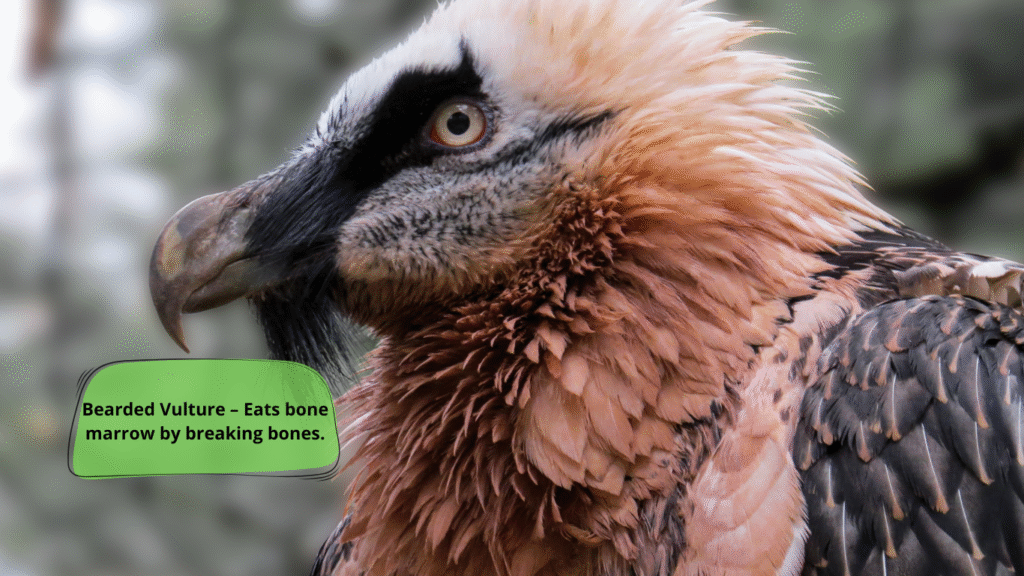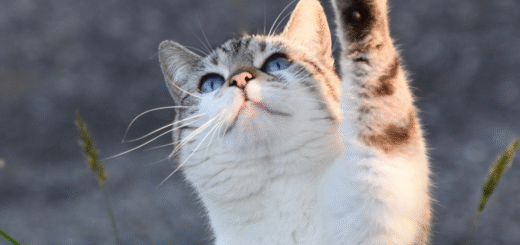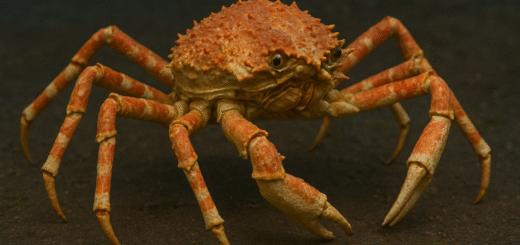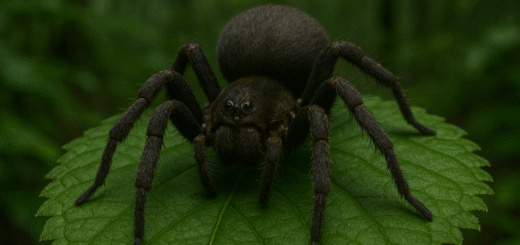Bearded Vulture: The Bone-Eating Guardian of the Mountains
The Bearded Vulture, also known as the lammergeier (Gypaetus barbatus), is one of the most fascinating and mysterious birds of prey in the world. Found soaring through the skies of rugged mountainous regions, this unique vulture plays a crucial role in ecosystems—and it’s not your typical scavenger. In fact, it’s one of the few birds that eats bones as a primary part of its diet.

What Makes the Bearded Vulture Unique?
Unlike most vultures that feed on flesh, the Bearded Vulture thrives on bones. Up to 90% of its diet consists of bone matter. With a stomach acid so powerful it can dissolve bone in under 24 hours, the lammergeier can access nutrients few other animals can. This helps clean up carrion more completely, making the bird a key player in natural decomposition processes.
Bone-Dropping Behavior: Nature’s Bone-Cracker
Bearded Vultures have developed a stunning behavior: they drop large bones from great heights onto rocks to break them into bite-sized pieces. This rare behavior is not only fascinating to observe but shows a level of problem-solving skill uncommon in birds.
Appearance and Size
The Bearded Vulture stands out with its rusty-orange feathers, black facial markings, and distinct “beard”—a tuft of dark feathers beneath its beak. It has a wingspan of up to 9.3 feet (2.8 meters), making it one of the largest flying birds in the world. Its elegant flight and striking look often lead it to be called the “angel of the Alps.”
Habitat and Distribution
Bearded Vultures inhabit high-altitude mountain ranges such as the Alps, Pyrenees, Himalayas, Caucasus, and parts of eastern and southern Africa. They prefer remote cliffs and crags for nesting, away from human interference.
Conservation Status: Near Threatened
According to the IUCN Red List, the Bearded Vulture is classified as Near Threatened. Threats include:
- Poisoned bait and illegal hunting
- Habitat loss due to human development
- Reduced food availability
Conservation programs in Europe, especially in the Alps, have been successful in reintroducing and stabilizing populations. Efforts include captive breeding, GPS tracking, and public education.
Why We Should Care About the Bearded Vulture
The Bearded Vulture is more than just an awe-inspiring bird—it’s a vital part of the alpine food chain. By consuming bones that other scavengers leave behind, it ensures that ecosystems stay clean and balanced.
Moreover, this species is an important cultural symbol in many regions, revered in ancient myths and seen as a symbol of wilderness.
Final Thoughts
The Bearded Vulture is a perfect blend of mystery, beauty, and ecological significance. As one of nature’s great recyclers, it deserves admiration and protection. From its bone-dropping intelligence to its majestic flight, this mountain guardian reminds us of the intricate and essential roles wildlife plays in maintaining our natural world.








